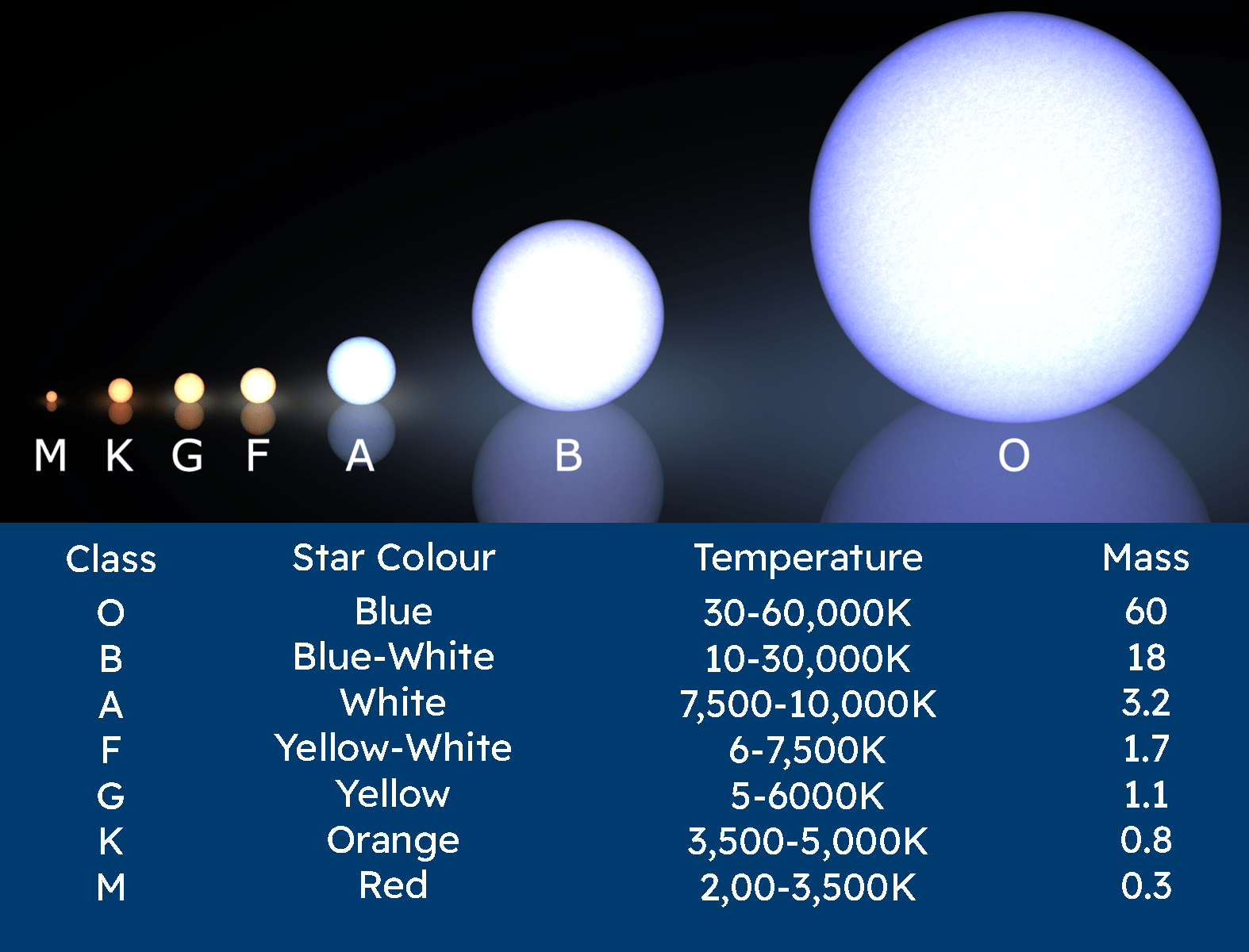Home > Sections > The Universe > Stars
Last Updated: 14th June 2023
ARCHIVED ITEM: this page is no longer updated.
Stars
Keywords
Star, protostar, neutron star, life cycle, black hole.
Introduction
It's a clear night, and all you can see in the sky are stars. We know they are there, and we know that they can be bright, they shine, they can be dim. They are the topic of many a story, fable and poem. But what actually is a star?
What is a Star?
Stars are formed in stellar nurseries. These are nebula that contain all the ingredients for a star to form. When it does, it uses hydrogen, helium and gravity to make heat, mass and photons. They then make heavier elements through their life, like carbon, silicone and iron.
Stars are born as clumps within gigantic clouds of gaseous materials and fall in on themselves. The temperature of a star has to be in excess of 10 million kelvin (K) (18 million °F) in order for the hydrogen nuclei to begin to fuse into helium nuclei.
Interesting fact: every day, some 275 million new stars are created in the universe, inside the stellar nurseries that house them.
Here is a YouTube video from National Geographic about stars:
Types of Star
Although we see them in the sky as being the same, there are different types of star. They include:
Protostar: a protostar is the beginning formation of a star. So, it sits in the stellar nebula that helps it gain it's main sequence, where it will remain for most of it's life. But the protostar is where there is still material falling inward of itself.
Main Sequence: our Sun is a main sequence star. It is a regular star that forms when clumps of gas and dust join together. Eventually, it starts to spin, and then heats up too. The Sun is 4.6 billion years old, and is expected to last another 5 billion years before changing to a red giant.
Red Giant: after being in main sequence, a star will turn into a red giant. This is more orange than red, and it is where it is losing it's hydrogen used for fusion. As a result of this, the helium content of it will create carbon through increased temperature and pressure, and releases even more energy. Then, the giant will begin to pulsate while unstable, ejecting some of the material from it's atmosphere. It will then expulse these materials to form a planetary nebula of cloud dust and gas.
White Dwarf: the energy from a red giant has emitted it's last energy, and what is left is the core. A white dwarf is about the same size as Earth, but it's mass is hundreds of thousands times more. A teaspoon of it's material would weigh the same as a pickup truck. For our Sun, this will happen in about 10 billion years.
Neutron: small surface areas, but packing a lot more mass than that of the Sun, a neutron star is the last stage before a black hole, and it contains no hydrogen whatsoever. It processes all the helium to form carbon, which creates energy; then it processes all the carbon, which turns into neon, thus creating more energy. The process continues, converting neon to oxygen, oxygen to silicone, and finally silicone to iron. Each process gives it less and less time, and the final stage lasts only a few days. Once done, it creates a supernova, a shock wave phenomenon.
Red Dwarf: the smallest of stars, a red dwarf is cooler than the others. They appear as orange in the sky, and our nearest one is Proxima Centauri, just 4.2 light-years away. They have a longer life, and there are more of them created in stellar nurseries. They make up around 75% of the Milky Way's stellar population.
Black Hole: not actually a hole, a black hole is a massive concentration of matter compacted into the smallest of spaces. Just imagine it along the lines of packing a single suitcase for a 2 week stay in a hotel. They have been studied and researched for decades, and it's still unknown about the how or why it is there. There are time and space changes as well, as if you were to approach a black hole, at some point, you would look and see yourself doing the same thing over and over, in an infinite loop.




 Gravity
Gravity


